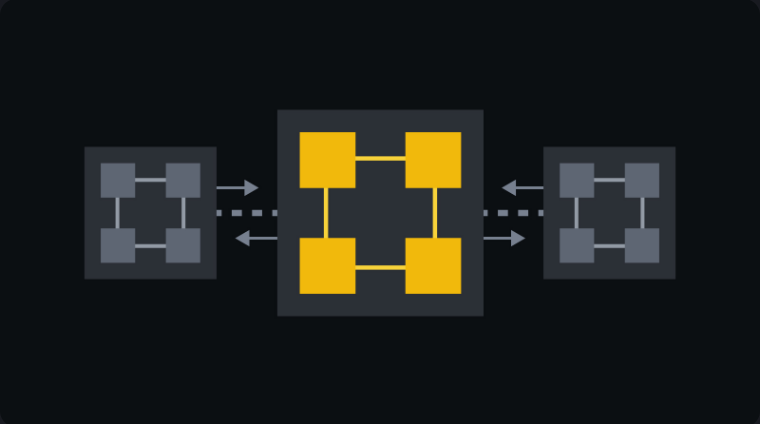
Summary
A sidechain is an independent blockchain connected to the main chain via a two-way cross-chain bridge, enabling the transfer of assets between the two.
Sidechains can operate autonomously with their own consensus mechanisms and block parameters, allowing for efficient transaction processing and customization for specific purposes.
Sidechains offer scalability, flexibility, and EVM compatibility but also come with compromises, including potential decentralization challenges and the need for robust security measures.
Introduction
The growing demand for scalability and efficiency in blockchain technology has given rise to various innovative solutions, one of which is the sidechain.
The concept of sidechains was first introduced in an October 2014 paper titled "Enabling Blockchain Innovations with Pegged Sidechains," co-authored by Adam Back and other cryptographers and Bitcoin developers, including Matt Corallo, Luke Dashjr, Andrew Poelstra, and Pieter Wuille.
So, what exactly is a sidechain, and how does it contribute to the blockchain ecosystem?
Definition of Sidechains
At its core, a sidechain is a parallel blockchain that operates independently of the main blockchain (also called the main chain). The two are typically connected via a two-way bridge, enabling seamless transfers of digital assets or tokens between the main chain and the sidechain.
How Do Sidechains Work?
The uniqueness of sidechains lies in their autonomy. Unlike the main chain, sidechains can flexibly adopt unique consensus algorithms and block parameters tailored for specific purposes. This freedom allows sidechains to process transactions efficiently while offering benefits such as shorter confirmation times and lower fees.
Consensus algorithms on sidechains may vary, including Proof of Authority (PoA) and Delegated Proof of Stake (DPoS). Validators in a sidechain network play a crucial role in verifying transactions, generating blocks, and ensuring the chain’s overall security.
Additionally, sidechains often differ from the main chain in block parameters. While the main blockchain imposes limits on block time and size, sidechains can adjust these parameters to achieve higher throughput. However, this comes with trade-offs—looser blockchain parameters may lead to reliance on fewer powerful nodes, potentially compromising decentralization.
EVM Compatibility
A key feature of some sidechains is compatibility with the Ethereum Virtual Machine (EVM). This allows sidechains to execute smart contracts written in languages like Solidity, providing developers with a familiar environment. Essentially, if a sidechain is EVM-compatible, it can seamlessly run decentralized applications (DApps) and execute smart contracts from the Ethereum blockchain.
Pros and Cons of Sidechains
Like any innovative technology, sidechains come with both advantages and limitations. Let’s explore some of their key pros and cons.
Pros
Scalability: Sidechains provide scalable solutions by offloading some transaction processing from the main chain, reducing congestion and improving performance.
Flexibility: Sidechains’ autonomy allows experimentation with different consensus mechanisms and parameters, fostering innovation and customization.
EVM Compatibility: EVM-compatible sidechains offer developers a smooth migration path, enabling them to deploy existing Ethereum smart contracts on the sidechain.
Cons
Decentralization Trade-offs: Achieving high throughput on sidechains often requires sacrificing some degree of decentralization, potentially leading to power concentration among a few validator nodes and impacting security.
Security Concerns: Sidechains are responsible for their own security. While security compromises on a sidechain don’t directly affect the main chain, this independence can introduce additional risks.
Complexity: Implementing and maintaining sidechains requires significant effort and resources. The complexity of initial setup and ongoing maintenance may hinder adoption.
Examples of Sidechain Projects
Several projects have adopted the sidechain concept, each offering unique features and addressing specific needs in the blockchain ecosystem. Notable examples include:
-
Polygon: Polygon combines sidechains with a Plasma framework to enhance Ethereum’s scalability, aiming to provide fast and low-cost transactions for decentralized applications (DApps).
-
SKALE: SKALE leverages elastic sidechains to offer developers a platform for building high-performance and scalable DApps, focusing on a developer-friendly environment.
-
Gnosis: Gnosis Chain utilizes the xDai sidechain to facilitate fast and stable transactions, emphasizing usability for applications requiring quick and low-fee transactions.
-
Loom Network: Loom Network focuses on creating scalable gaming and social applications on the blockchain, using a DPoS consensus mechanism for high throughput.
Conclusion
In the ever-evolving blockchain landscape, sidechains stand out as a promising solution to scalability challenges. Their ability to operate independently, combined with EVM compatibility and bridging features, opens up new possibilities for diverse applications and use cases.
However, users and developers must carefully weigh the trade-offs, considering decentralization, security, and implementation complexity. As the blockchain space continues to mature, sidechains are likely to play an increasingly vital role in shaping a more scalable and versatile ecosystem.
















